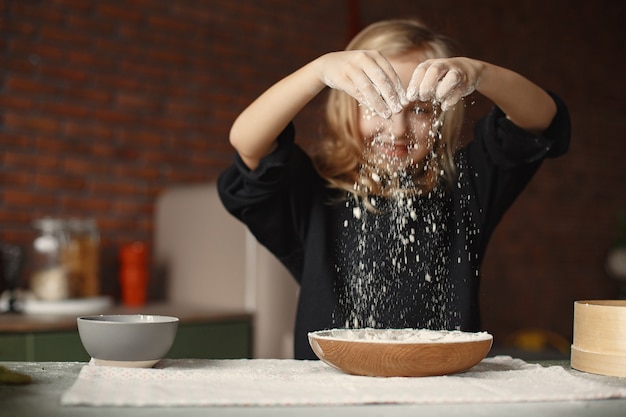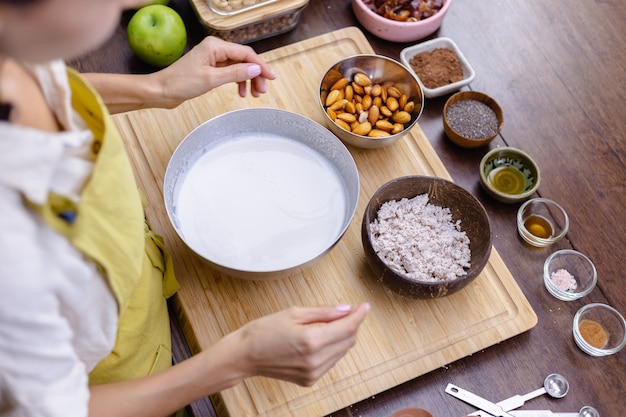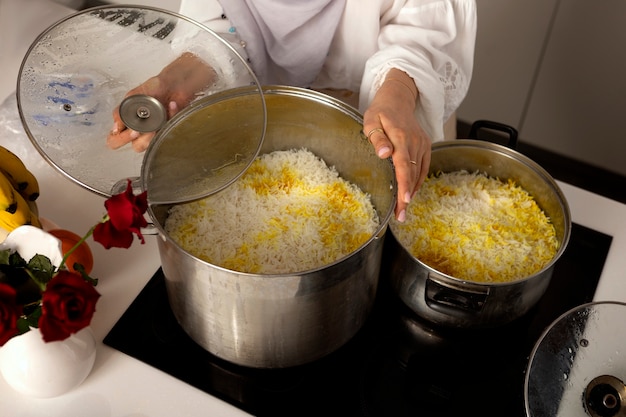Ah, rice. The humble grain that forms the bedrock of countless cuisines around the world. Whether you're whipping up a simple weeknight dinner or a celebratory feast, getting the rice just right is crucial. But the age-old question always lingers: how much water do I use? It's a question that's haunted my kitchen for years, leading to a fair share of sticky, undercooked, or overly mushy rice mishaps. But after years of experimentation (and a fair few burnt pots!), I've finally cracked the code to perfectly fluffy rice, every single time.
Part 1: The Building Blocks of perfect rice

Before we dive into specific ratios, let's get the fundamentals right. Think of it as laying a solid foundation for a delicious rice masterpiece. Understanding these principles will make your rice journey infinitely smoother.
1.1 The Importance of Rice Type
First things first, the type of rice you choose plays a starring role in the final texture. long-grain rice, like basmati and jasmine, is known for its fluffy, separated grains, perfect for absorbing flavours. short-grain rice, like arborio (used for risotto), is stickier and holds its shape, ideal for creamy dishes. The perfect ratio for one type of rice might not work for another, so it's essential to choose the right rice for your desired outcome.
1.2 The Power of Quality
You know the saying, "You get what you pay for"? Well, it holds true for rice too. I've learned that using high-quality rice makes a world of difference. Look for brands with a good reputation, and you'll notice a difference in the texture and flavour of your rice. Trust me, it's worth the extra few pennies. Imagine a cloud-like rice that melts in your mouth, rather than a dense, flavourless lump.
1.3 The Pot Factor
Don't underestimate the size of your pot! A large pot, especially if you're making rice for a crowd, will need more water to ensure the rice is evenly submerged. A smaller pot, on the other hand, might need slightly less water. The key is to make sure the water level covers the rice by about an inch or so.
Part 2: The Rice-to-Water Ratios

Now, let's get down to the nitty-gritty: the ratios. These are my tried-and-true formulas that have consistently delivered fluffy, delicious rice. Remember, these are just starting points; you might need to tweak them slightly depending on your rice, pot, and personal preference.
2.1 Long-Grain Rice: The 1:1.5 Ratio
This is my go-to ratio for long-grain rice, like basmati or jasmine. It's the perfect balance for everyday cooking. For every cup of rice, I use 1.5 cups of water. This ratio consistently produces perfectly fluffy rice that separates beautifully. It's my "standard" ratio, the one I always fall back on when in doubt.
2.2 Short-Grain Rice: The 1:1.75 Ratio
Short-grain rice requires a bit more water to cook evenly because of its higher starch content. I've found that a 1:1.75 ratio works best. So, for every cup of rice, you'll use 1.75 cups of water. This extra water helps to cook the rice through without making it mushy.
2.3 The Art of Adjusting
Remember, these ratios are just a guideline. Experimentation is key! If you prefer a wetter rice, you might add a little more water. If you're after a firmer texture, use a bit less. The beauty of cooking is the freedom to find your own perfect balance. It's a journey of discovery, and you might find that your ideal ratio changes based on your rice and your mood!
Part 3: The Cooking Process

Now that we have our ratios sorted, let's dive into the actual cooking process. I primarily cook rice on the stovetop, but rice cookers are a fantastic option too. The key is to bring the rice and water to a boil, then simmer until the rice is perfectly cooked through.
3.1 The Stovetop Method: A Classic Approach
This is my tried-and-true method, and it never fails to deliver. Here's how I do it:
- Add your rinsed rice and water to a medium saucepan with a tight-fitting lid. You want the pot to be large enough to allow the rice to expand during cooking.
- Bring the mixture to a rolling boil over high heat. This initial boil activates the cooking process and ensures the rice starts to cook evenly.
- Reduce the heat to low, cover the pot tightly, and simmer for 15-20 minutes, or until the rice is tender and the water is absorbed. Resist the urge to peek too often, as this can disrupt the steam and make the rice dry.
- Once the rice is cooked, let it rest, covered, for 5-10 minutes. This crucial step allows the steam to finish cooking the rice and prevents it from becoming dry and crumbly.
- Gently fluff the rice with a fork to separate the grains and achieve that perfect fluffy texture.
3.2 The Rice Cooker Method: Simplicity at its Best
If you have a trusty rice cooker, you're in for a treat! It simplifies the process tremendously. Follow the instructions for your specific model, but generally, you'll add the rice and water, press the "cook" button, and let the magic happen. No need to constantly monitor the pot or adjust the heat. It's truly a set-it-and-forget-it method, perfect for busy weeknights.
Part 4: Unlocking Fluffy Rice Secrets
Now, let's talk about those little tricks that elevate your rice from good to absolutely incredible. These are the details that make all the difference, the ones that separate the ordinary from the extraordinary.
4.1 The No-Stir Rule
Once your rice has come to a boil, resist the temptation to stir it! Stirring can break up the rice grains, leading to a mushy texture. Let the rice simmer peacefully until the water is absorbed. Trust the process, and it will reward you with beautifully separated rice.
4.2 The Power of a Tight Lid
A tight-fitting lid is essential. It traps the steam inside the pot, ensuring the rice cooks evenly. If your lid isn't a perfect fit, use a piece of parchment paper or a clean tea towel to create a seal. This is especially important when using a stovetop method.
4.3 The Resting Period: Patience is Key
That resting period after cooking is crucial, even more so than you might think. It allows the steam to finish cooking the rice and prevents it from becoming dry and crumbly. Think of it as a final stage of the rice's transformation. Don't rush to fluff it right away. Let it sit patiently for those few minutes before you start serving.
4.4 The Art of Fluffing
When the time comes, use a fork to gently fluff the rice. This separates the grains and creates that perfect fluffy texture. Be gentle, no need to be aggressive. Just a little lift to release the steam and create that airy, inviting texture.
Part 5: Experimentation and Discover Your Perfect Rice
Cooking is an adventure, and your rice journey is no exception. Don't be afraid to experiment! Try different types of rice, adjust the ratios, and see what happens. It's all about discovering what works best for you, your taste buds, and your kitchen. You might uncover a new favourite rice dish in the process.
5.1 Elevating Your Rice with Flavour
Want to take your rice to the next level? Get creative! Add a bay leaf or a couple of star anise to the pot while simmering. The subtle flavour will infuse the rice, creating a delightful aroma. A pinch of salt or a squeeze of lemon juice adds a tangy twist, and even a sprig of rosemary can add a unique dimension. Experiment and find what tickles your fancy!
Part 6: Rice for Every Occasion
Now, let's explore some practical applications, because there's a perfect rice recipe for every occasion. From simple weeknight dinners to grand celebrations, rice is the versatile companion for countless dishes.
6.1 Everyday Rice: A Weeknight Staple
For those busy weeknights, this is your go-to recipe. Stick to the standard 1:1.5 ratio for long-grain rice, and you'll have a fluffy and flavourful side dish in no time. It pairs beautifully with stir-fries, curries, or any other dish you can imagine. It's the perfect blank canvas for your culinary creations.
6.2 Special Occasion Rice: Impress Your Guests
Want to impress your guests? Try making a fragrant basmati rice with a hint of cardamom and saffron. It's a beautiful and delicious way to elevate any dish. Add a few strands of saffron and a pinch of cardamom pods to the water when it comes to a boil. The aroma will fill your kitchen, and the vibrant colour will add an extra touch of elegance to your meal.
6.3 Risotto: A culinary adventure
Feeling adventurous? Dive into the world of risotto! arborio rice, the star of this creamy delight, requires a bit more TLC than regular rice. The secret lies in constant stirring and gradually adding hot broth to the rice, creating a luxurious, creamy texture. It's a bit more involved, but the payoff is worth the effort!
Part 7: Storing Your Rice: Keeping it Fresh
Once you've created your perfect rice, you want to keep it fresh and flavourful. Here's how: let the rice cool completely before storing it in an airtight container in the refrigerator. It will stay fresh for up to 3-4 days. You can also freeze cooked rice for up to 2-3 months. Simply thaw it in the fridge overnight before reheating it in the microwave or on the stovetop. And remember, you can always add a little bit of water to the rice when reheating to prevent it from drying out.
Part 8: FAQs: The Common Rice Questions
Let's address those burning questions that often pop up in the rice-cooking world.
8.1 What Happens If I Use Too Much Water?
Too much water, and your rice will be mushy and sticky. It won't have that lovely fluffy texture. If you find yourself in this situation, you can try spreading the rice out on a baking sheet and drying it in the oven on low heat for a few minutes. But honestly, it's best to avoid over-watering altogether. Stick to the ratios!
8.2 What Happens If I Use Too Little Water?
If you use too little water, your rice will be dry and crumbly. It might even be undercooked. You can try adding a little more water and simmering it for a few more minutes, but prevention is better than cure. Avoid under-watering from the start.
8.3 Can I Add Salt to the Rice?
Yes, you can add salt to the rice while it's cooking. Just add a pinch or two to the water before you bring it to a boil. Salt enhances the flavour of the rice and helps to season it. It's a subtle but important touch.
8.4 Why Is My Rice Sticky?
sticky rice is often a sign of too much starch. Try rinsing the rice more thoroughly before cooking to get rid of excess starch. You can also try using a different type of rice. Long-grain rice is generally less sticky than short-grain rice.
8.5 Can I Use a Microwave to Cook Rice?
Yes, you can cook rice in the microwave. Add the rice and water to a microwave-safe dish, cover it with plastic wrap, and microwave it on high for 5-7 minutes, or until the rice is cooked through. You might need to adjust the cooking time depending on the power of your microwave and the amount of rice you're cooking. But, for the most consistent results, I recommend the stovetop or rice cooker methods.
Now, go forth and conquer the world of rice! May your kitchens be filled with the aroma of perfectly cooked rice, and your meals be graced with fluffy, flavourful goodness. Happy cooking!
Everyone is watching

Perfect Rice Every Time: The Ultimate Guide to Cooking Rice
Cooking TipsAs a self-proclaimed foodie, I've always been a bit obsessed with rice. It's the foundation of countless cuisi...

Prime Rib Roast Cooking Time Chart: Per Pound Guide
Cooking TipsPrime rib roast. Just the name conjures images of lavish dinners, crackling fires, and hearty laughter. It’s ...

The Ultimate Guide to Cooking Asparagus: Tips, Techniques, and Recipes
Cooking TipsAsparagus. The mere mention of this spring delicacy conjures up images of vibrant green spears, crisp and burs...

Ultimate Guide to Cooking the Perfect Thanksgiving Turkey
Cooking TipsThanksgiving. Just the word conjures up images of overflowing tables laden with delicious food, the scent of r...

How Long to Bake Potatoes in the Oven (Perfect Every Time)
Cooking TipsBaked potatoes are a staple in my kitchen. They're incredibly versatile, delicious, and surprisingly easy to m...
